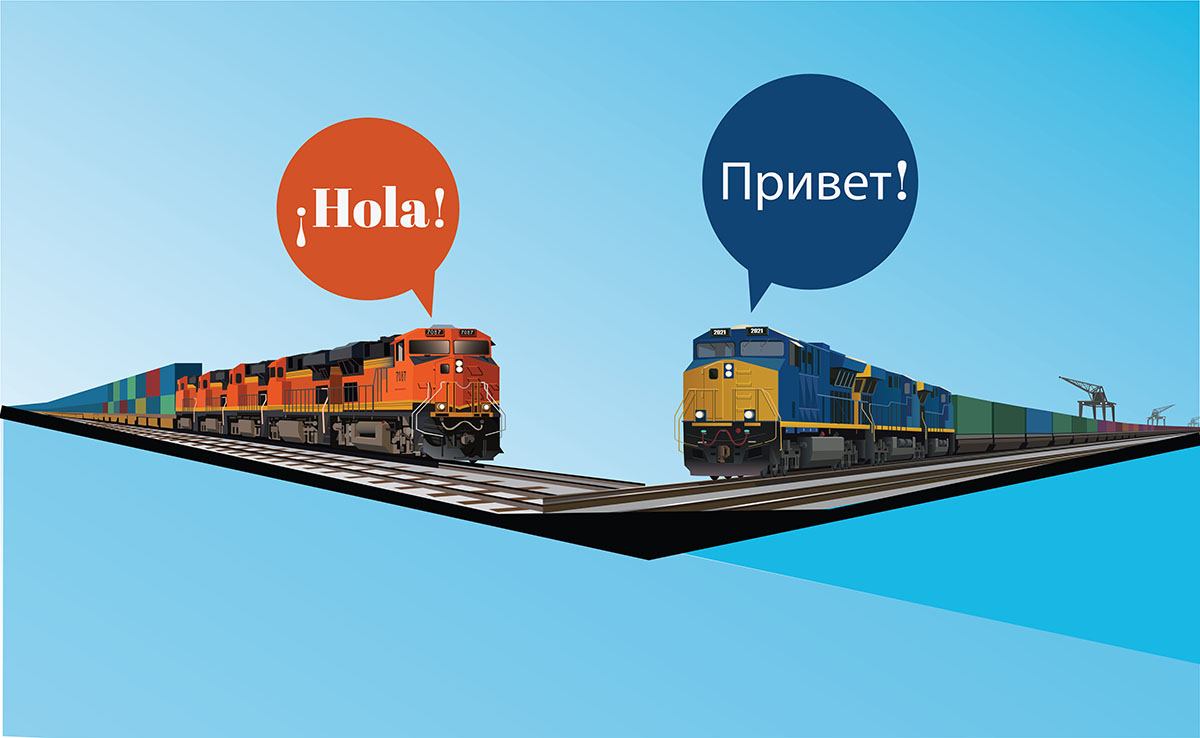
Interoperability is a word that’s used exhaustively in the world of IoT.
It’s a word that can summon a sense of excitement in many, but also panic in others (looking at you product teams). It’s most commonly discussed within the headspace of the end user – those with hopes and dreams of all of their connected products working in harmony to just simply make life easier.
There are many levels to dig into when trying to define what interoperability in the IoT really means and usually the conversation gets into the technical weeds, but to quickly illustrate the value of interoperability, let’s take a look at a very simple example – railroads.
In North America, the railroad networks are quite vast and cover multiple regions and even countries. They’re owned by a number of different companies and they share those rail networks with each other. Historically, a significant by-product of this shared use has been increased risk of accidents due to broken signal systems and human error. It’s hard to swerve to avoid head-on collisions when you’re on rails.
This is where the remote management technology called Positive Train Control or PTC comes into play. What this technology is designed to do is monitor and manage trains remotely (where they are, how fast they are going, how long it will take them to stop, etc.) to mitigate risk of accidents like head-on collisions or derailments caused by outdated technology or human error.
The system is designed to monitor when trains from different companies are operating on the same set of tracks, how fast they’re going relative to speed requirements on certain sections of track and notify them when to pull off on a siding or can even slow down the locomotive remotely to prevent a derailment.
But unfortunately many of the chosen technologies also lack interoperability with other systems.
Sounds great, right? Of course it does. However, installing this technology requires integrating thousands of components across the telecommunications spectrum, such as GPS, Wi-Fi, cellular technology, antennae, base stations and first-of-its-kind software that decides when to slow or stop a train. In other words, it is very hard to do.
Making things even more problematic, like many product manufacturers in the residential, commercial, and smart city/utility IoT industry, many rail networks are deploying different equipment/RF technology to achieve connectivity. But unfortunately many of the chosen technologies also lack interoperability with other systems.
So in many cases this means that although rail networks have a version of PTC, and are sharing track with other rail companies, they can’t communicate with all trains that may be on their tracks. This lack of interoperability immediately reduces overall value to the public and silos the solutions, reducing their utility and intended functionality.
So with this in mind, let’s sum up the value of interoperability. Every train should be able to communicate basic details to the rail network it finds itself on, and that network should be able to monitor and control those trains. That’s interoperability. The resulting value – safer rail networks, less accidents, and increased trust.
Now, I’m not saying that if connected product teams fail to devote focus and energy to ensure their products are interoperable with others that it’s a matter of life or death, but it doesn’t mean your product won’t still be a train-wreck without it.
Sign-Up for our Newsletter
